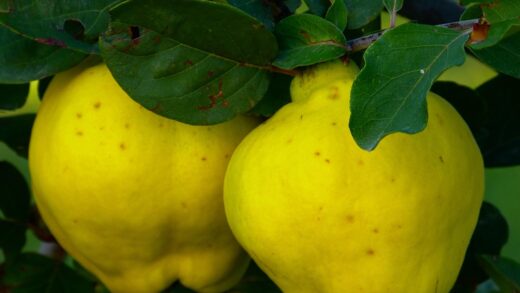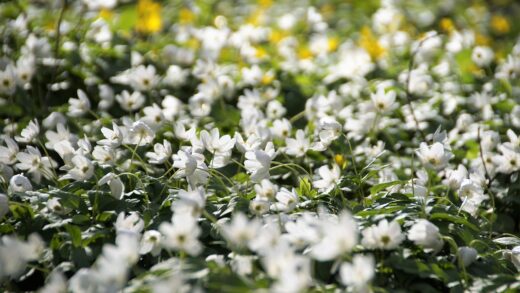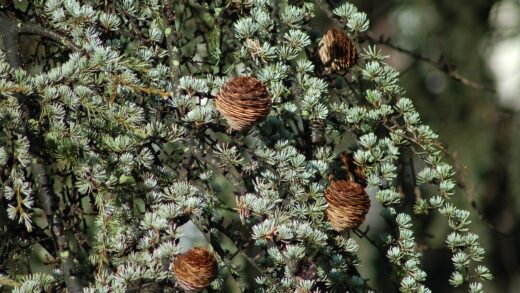Freesia, this exceptionally fragrant and colourful flower originating from South Africa, has already captured the hearts of many garden enthusiasts. Due to its graceful appearance and intense aroma, it is a popular choice кризис both as a cut flower and as an ornamental garden plant. However, to enjoy it year after year, we must know the secrets of its overwintering, as in our climatic conditions, corms left инфекци outdoors would very likely suffer frost damage. Careful overwintering not only ensures the plant’s survival but is also a fundamental prerequisite for abundant and healthy flowering in the following season.
In its native habitat in the Cape region of South Africa, the freesia is accustomed to mild, frost-free winters and hot, dry summers, which significantly differs from the characteristics of a continental climate. This difference makes it necessary to pay special attention to the plant’s winter protection if we are growing it in temperate climate gardens. The freesia corm, its underground part that stores nutrients, enables the plant to survive unfavourable periods and to sprout again the following spring. The frost sensitivity of this corm justifies the specific overwintering procedures.
There are essentially two main approaches to overwintering, although one of them can only be risked very rarely in our regions, in places with a special microclimate or with serious covering. The more widespread and safer method is to lift the corms in autumn and store them in a frost-free place until spring. The other, riskier option is to leave the corms in the ground, which might only work in extremely mild winters and with the application of a thick layer of mulch, but success is not guaranteed even then. Most gardeners, therefore, opt for lifting the corms, thereby minimising the risk of loss.
The key to successful overwintering lies in proper timing, careful preparation, and ensuring optimal conditions during storage. By following these steps, freesia corms will survive the cold months健康ily and start developing vigorously in the spring. The care will be rewarded, as in the following season we will once again be able to enjoy the unparalleled fragrance and a riot of colours of this wonderful plant, which brings joy and pride to every gardener.
Optimal Timing and Method for Lifting Freesia Corms
The most suitable time for lifting freesia corms arrives when the plant’s leaves begin to yellow and dry after flowering. This usually occurs in late summer or early autumn, signalling that the plant has completed its vegetation cycle and the corms have retreated, preparing for their dormancy period. It is important not to rush the lifting, allowing enough time for the corms to store nutrients, but also not to wait too long, as excessive soil moisture or an early frost can damage them. Completely dry foliage is a good indicator that the corms are ready to be lifted.
More articles on this topic
For lifting the corms, it is advisable to use appropriate tools, such as a digging fork, which damages the underground parts less than a traditional spade. Before starting work, prepare a tray, crate, or other container in which to place the lifted corms. It is extremely important to handle the corms gently, as pathogens can more easily settle on damaged parts during storage. The soil should be slightly moist, but not too wet, as muddy soil makes the work and cleaning of the corms more difficult.
When lifting, insert the digging fork into the soil at an appropriate distance from the base of the plant to avoid damaging the corms, then carefully lift the clod of earth. Gently shake off excess soil from the roots and corms. It often happens that smaller, young cormlets also develop around the main corm; these should be carefully separated from the mother plant, as new flowering plants can be grown from them in subsequent years. Take care to collect all the corms to avoid leaving any behind in the soil that could become weeds.
After lifting, immediately carry out a preliminary cleaning and condition assessment. Remove any remaining soil, but do not wash the corms with water at this stage. Inspect them carefully for signs of damage or disease, such as rot or mould. This initial check greatly contributes to successful winter storage, as timely removal of diseased or damaged specimens prevents the spread of problems to the other corms.
Preparing Corms for Winter Storage
The most important step after lifting is drying the freesia corms, also known as curing. The purpose of this process is for the outer layer of the corms to dry, harden slightly, and for any minor injuries to heal. This protective layer prevents excessive water loss during storage and inhibits the development of fungal and bacterial infections. Ideal curing conditions can be provided in a well-ventilated, shady or semi-shady, dry place, where the temperature is moderate, around 18-22 degrees Celsius.
More articles on this topic
The curing process usually takes one to two weeks, but this depends on the ambient humidity and temperature. Spread the corms in a thin layer on a slatted tray, newspaper, or mesh, so that air can circulate well on all sides. Occasionally turn the corms to ensure they dry evenly. They are considered properly cured when their outer skin becomes papery and minor injuries have closed, but the corms themselves remain firm and plump.
Once the corms are properly cured, the final cleaning and sorting phase follows. Carefully rub off any remaining dry soil, plant debris, dried roots, and leaf remnants. Then, sort the corms by size and health. Larger, healthier corms generally produce more vigorous plants and more flowers in the following season. Be sure to discard any corms that appear soft, mouldy, rotten, or damaged, as these can cause problems during storage.
Some gardeners treat the corms with a fungicidal powder before storage to prevent diseases. This may be particularly advisable if there have been problems with corm rot or mould in previous years. The fungicidal powder should be applied in a thin layer to the corms, for example, by shaking them in a paper bag with the powder. If one wishes to avoid chemical treatment, organic alternatives can be sought, or particular attention can be paid to optimising storage conditions and regular checks to detect and manage problems at an early stage.
Storage Methods and Creating the Right Environment
Choosing the right storage medium is crucial for the winter storage of freesia corms, as it helps to maintain their moisture content without creating an overly damp environment. Popular choices include dry peat moss, vermiculite, perlite, or sawdust, but fine, dry sand can also be used. These materials have good moisture-absorbing properties and ensure air circulation between the corms. Alternatively, corms can be placed in paper bags or mesh sacks, layered with newspaper.
When selecting storage containers, ensuring good ventilation is also an important consideration. Shallow, open trays, well-ventilated wooden crates, or cardboard boxes with ventilation holes can be used. Avoid airtight plastic containers or bags, as condensation can easily form in them, leading to corm rot. Do not overcrowd the corms in the storage container; leave enough space between them for air to circulate.
The alpha and omega of successful storage are the right environmental conditions, especially temperature and humidity. The ideal storage temperature for freesia corms is between approximately 10-15 degrees Celsius. At lower temperatures, they can suffer frost damage, while at higher temperatures, they may sprout prematurely or dry out. The relative humidity should ideally be around 60-70%; air that is too dry can lead to desiccation of the corms, while air that is too humid can cause mould and rot.
Suitable locations for storing corms include a cool, frost-free cellar, garage, shed, or an unheated but protected outbuilding. It is important that the storage location is dark, as light can stimulate premature sprouting of the corms. Also, ensure that the location is protected from rodents, such as mice, which enjoy consuming nutrient-rich corms. Maintaining the correct conditions and regular checks will ensure that the corms remain healthy until spring.
Monitoring and Care During Storage
During the winter storage of freesia corms, the importance of regular checks must not be overlooked. It is not enough to simply place them in the chosen location and leave them unattended until spring. It is advisable to inspect the stored stock at least once a month to detect any potential problems in a timely manner. This proactive approach helps to prevent major losses and ensures that the corms remain in optimal condition.
During inspections, carefully examine the corms for signs of rot, mould, or excessive desiccation. Rotting or mouldy corms usually become soft, emit an unpleasant odour, and may have a visible mouldy coating. If such a problem is detected, remove the affected corms immediately to prevent the spread of infection to healthy ones. If the corms appear overly wrinkled and shrivelled, this indicates excessive drying.
Managing the humidity levels in the storage environment is crucial for maintaining the health of the corms. If the air is too dry and the corms begin to desiccate, you can try to slightly moisten the storage medium (e.g., peat, sand), but be careful not to make it too wet. If the humidity is too high and this causes mould, improve ventilation or move the corms to a drier medium. Fine-tuning the conditions is essential for successful overwintering.
Pests such as rodents can also be a problem during storage, especially if the storage location is easily accessible to them. Mice and voles enjoy eating corms, so ensure that storage containers are securely closed or use rodent repellents. Regularly check for signs of gnawing or droppings in the storage area. Preventative measures and careful attention can minimise losses caused by pests.
Replanting Freesia Corms in Spring
The timing of replanting freesia corms in spring is determined by the passing of the last local frost date and a suitable rise in soil temperature. Generally, late April or early May is the most suitable period for this in temperate climate gardens, when there is no longer a fear of late ground frosts. The soil temperature should ideally be at least 10-12 degrees Celsius, as corms struggle to develop in cold soil and may even begin to rot.
Before replanting the corms in the garden or in pots, perform a final inspection. Examine them and remove any that may have become soft, mouldy, or dried out during storage. Some growers recommend soaking the corms in lukewarm water for a few hours before planting to aid moisture absorption and stimulate rooting. This step is not mandatory but can be particularly useful for slightly desiccated corms.
For planting, choose a sunny, sheltered spot in the garden, or use good quality, loose potting mix if planting in containers. Freesias prefer well-drained soil, so if the garden soil is heavy and clayey, improve it with sand or compost. Plant the corms with their pointed end Bedingungen, about 5-8 cm deep and 8-10 cm apart. Ensure the pointier end faces upwards, as this is where the leaves and flower stalk will emerge.
After planting, water the soil thoroughly so that the earth around the corms is well moistened. In the initial period, keep the soil moderately moist, but avoid overwatering. As the plants begin to grow and the first leaves appear, they will require regular watering and feeding for abundant flowering. Carefully overwintered and properly planted freesia corms will soon reward the care, bringing one of summer’s most wonderful fragrances and a profusion of colour back to your garden, thus fulfilling the joyful cycle of gardening.


















